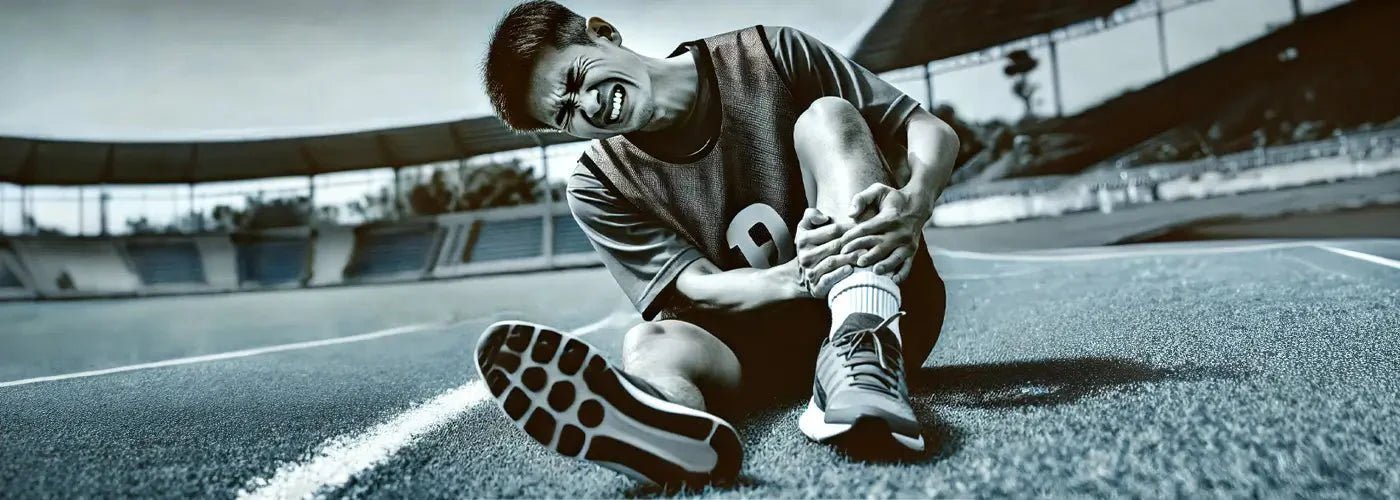
Muscle Strain
Table of contents
A muscle tear is when the muscle fibers in a muscle are damaged or torn, often as a result of a sudden, forceful movement or overuse. It is a common injury, especially among athletes and people who engage in physical activity. However, it can also affect those who do not exercise regularly, especially if you strain your body in a way it is not used to. It is therefore important to know what it feels like, how it is treated, and what you can do to avoid the injury from occurring.
What is a muscle tear?
A muscle strain, sometimes called a muscle rupture, means that the muscle has been subjected to a force that exceeds its endurance, causing the muscle fibers to tear. This often happens during explosive movements such as sprinting, jumping, or rapid changes in direction. It can also occur when lifting heavy objects or if you slip and try to catch yourself with an arm or leg. A tear can be small, affecting only a few fibers, or more extensive, involving a larger part of the muscle.
Symptoms of muscle strain
A muscle tear quickly causes clear symptoms. Here are the most common signs:
- Sudden, sharp pain in the muscle at the time of injury
- Swelling and tenderness in the area
- Bruising or skin discoloration
- Decreased strength in the injured body part
- Stiffness or difficulty moving the affected muscle
- Pain that worsens with use of the muscle
- In some cases, you may feel a small “hole” or indentation in the muscle.
Symptoms usually appear immediately, but swelling and bruising can sometimes only appear after a few hours.
Causes of muscle rupture
The most common cause is that the muscle is strained heavily and suddenly. This is common in sports, especially sports where fast movements and jumping occur. Insufficient warm-up increases the risk, as cold muscles are stiffer and less elastic. Fatigue, overload or previous ruptures can also contribute. Untrained muscles and poor technique during movements increase the risk of injury. Sometimes a direct blow to the muscle can lead to rupture, for example in contact sports.
Diagnosis
The diagnosis is often made by a doctor or physiotherapist after a clinical examination. Often it is enough to describe how the injury occurred and what symptoms have arisen. The doctor examines the mobility and strength and feels for tenderness, swelling and any indentations in the muscle. In rare cases, when it is difficult to determine the extent of the injury, an ultrasound examination or magnetic resonance imaging (MRI) may be necessary.
Treatment of muscle rupture
Treatment aims to reduce pain, limit swelling and speed up healing. The first step is to stop the activity that caused the injury. Rest and rest are important, but it is also good to keep moving gently within the pain threshold to maintain circulation. Immediately after the injury, it is good to cool the area to reduce pain and swelling, but avoid putting ice directly on the skin. An elastic bandage can provide support and reduce swelling. Elevation also helps with swelling. If necessary, painkillers can be used, but avoid overexerting the muscle during healing.
After a few days, you can begin light range of motion and stretching exercises, but avoid any strain that causes pain. Return to normal activity should be gradual and only when you have regained full mobility and strength. A physiotherapist can help you with individually tailored exercises to regain function.
Prevent muscle rupture
You can reduce the risk by always warming up properly before exercise or physical activity. Regular exercise, where you strengthen your muscles and improve flexibility, is important. Avoid sudden and unusual movements and listen to your body's signals in case of fatigue or stiffness. Use the right technique and adjust the load to your level.
When should I seek medical attention?
If you are in a lot of pain, if the swelling does not go down, or if you have difficulty using the injured body part, you should contact healthcare. It is also important to seek medical attention if you suspect that a large part of the muscle has been torn, or if it is difficult to support a leg or use an arm. A muscle tear that is not treated properly can lead to reduced function and a longer rehabilitation period.
Recommended products
How long does it take to heal a muscle tear?
Most muscle strains heal within a few weeks, but larger injuries can take several months. Early rehabilitation helps with healing.
Can you exercise with a muscle tear?
Initially, you should rest from strenuous exercise. Once the pain has subsided and you have regained mobility, you can gradually start with lighter exercises.
How do I know if it's a tear or just a stretch?
A rupture often causes a sudden, sharp pain and sometimes bruising, while a strain feels more like a dull, aching pain.
What can I do myself to speed up healing?
Follow the RICE principle (Rest, Ice, Compression, Elevation), start with light exercise and seek support from a physiotherapist for customized rehabilitation.




